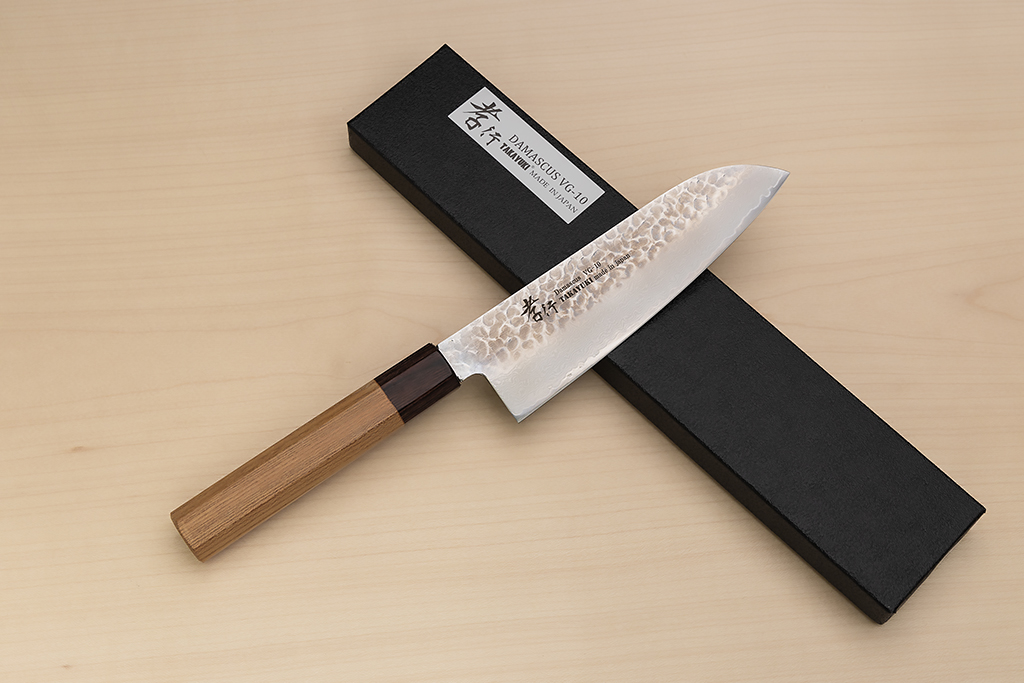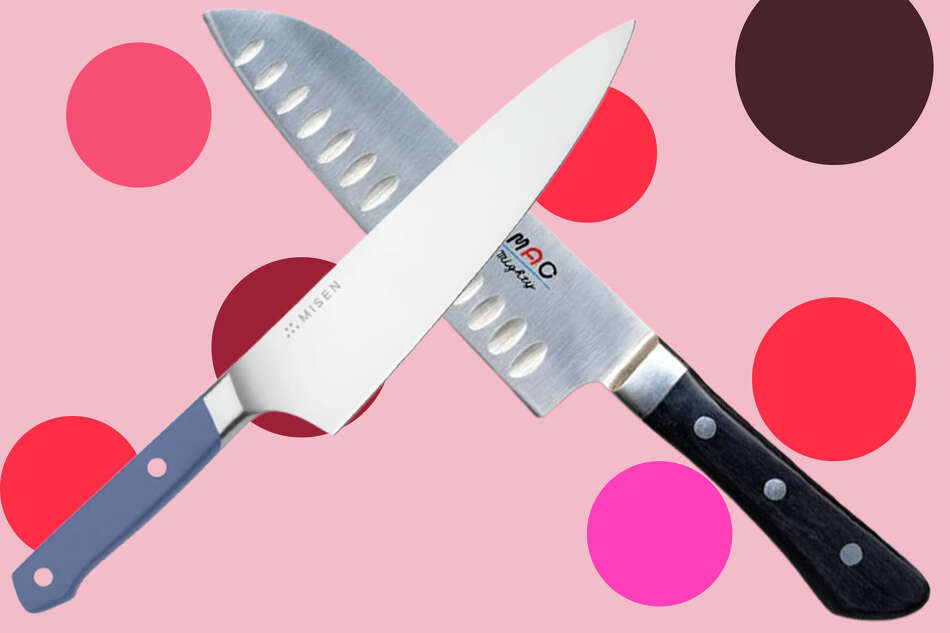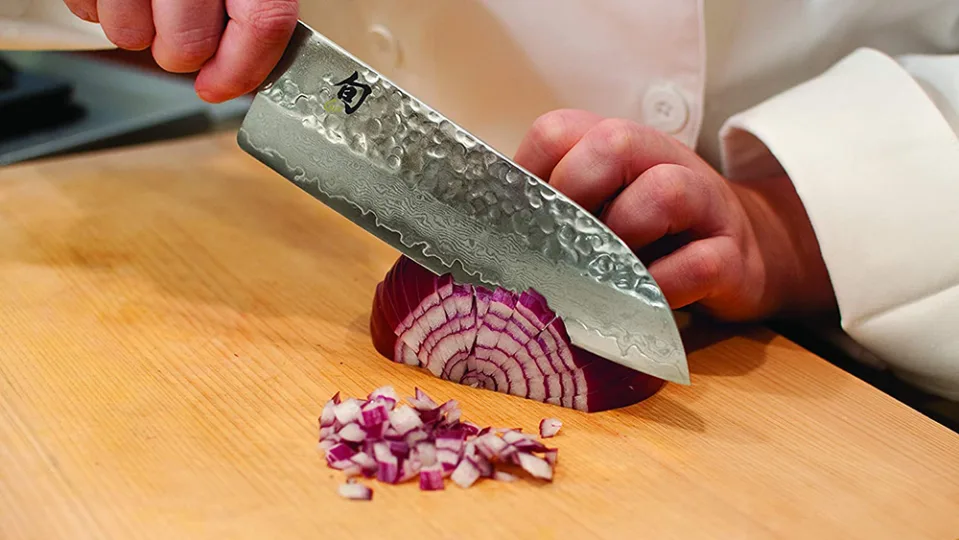The correct equipment can help chefs achieve precision, efficiency, and mastery. Santoku knives are popular among chefs and home cooks. Santoku knives—what are they?
This article covers the origins, design, usage, and benefits of this multipurpose kitchen equipment. Read on to learn about Santoku knives, whether you’re a budding chef or a foodie.
What is a Santoku Knife?
Santoku means “three virtues” or “three uses” in Japanese. The knife can slice, dice, and mince, hence its name. Many kitchens use the Santoku knife because to its unique appearance and utility.
Origins of the Santoku Knife

Santoku knives have a deep Japanese heritage. It was a home cook’s knife in Japan in the late 19th century. Santoku knives typically have 5–7-inch blades, shorter than Western chef knives. Its wide, flat blade has a slightly curved edge and blunt tip.
Anatomy of a Santoku Knife

Let’s examine a Santoku knife’s main parts and functions:
Blade: Santoku knives’ blades are their souls. High-carbon stainless steel makes it durable, sharp, and corrosion-resistant. The blade balances strength and precision.
Edge: Santoku knives have sharp, well-honed edges for precision cutting, slicing, and dicing. The blade’s edge angle is usually 15–18 degrees, making cuts easy.
Grantons: Some Santoku knives have little indentations or hollowed-out grooves on the blade. These grantons reduce friction and prevent slices from sticking by creating air gaps between the blade and the food.
Handle: Santoku knives have wood, plastic, or composite handles. Its soft grip makes food preparation easy.
The Uses of a Santoku Knife

After examining a Santoku knife’s parts, let’s look at its many kitchen uses:
Slicing
The Santoku knife slices food precisely with its razor-sharp edge. The Santoku knife cuts delicate fish fillets, juicy tomatoes, and soft meat evenly.
Dicing
Santoku knives excel at dicing vegetables. Its large blade and sharp edge make dicing onions, peppers, carrots, and other vegetables easy. The flat blade keeps food from sticking.
Mincing
Sharp and slender Santoku knives simplify the process with perfect control. Its rocking motion minces herbs, garlic, and other aromatics quickly, assuring finely chopped materials for your dishes.
Chopping
The Santoku knife’s wide blade and strong build make it ideal for slicing butternut squash and boneless meats. The knife’s weight and balance allow forceful, controlled cutting, reducing wrist strain.
Precision Cut
For precision cutting and mobility, the Santoku knife is ideal. The Santoku knife makes precise cuts without waste whether removing fish skin or trimming fat from meat.
Cooking duties
Santoku knives are culinary all-rounders. It can slice, dice, and cut, making it essential for meal prep. Santoku knives are indispensable for chefs and household cooks alike.
Santoku Knife FAQs
Left-handed Santoku knives?
many Santoku knives have ambidextrous handles.
Santoku knife sharpening—how?
Sharpening your Santoku knife periodically keeps it sharp. Use an honing rod to straighten the edge between usage and a whetstone or professional knife sharpener to sharpen the blade.
Santoku knife for bone cutting?
Santoku knives don’t cut bones. Slicing, dicing, and mincing are their main uses. Use a boning or cleaver knife to chop bones.
What are Santoku knives’ advantages over chef’s knives?
Santoku knives have advantages over chef’s knives. Shorter blades improve mobility and control. Their flat edge and grantons prevent food from sticking, making cutting easier.
Santoku knife dishwasher safe?
Dishwashing Santoku knives is not advised. High heat and harsh detergents harm the blade and handle. Handwashing and drying your Santoku knife is preferable.
Santoku knives for chefs?
Absolutely! Chefs worldwide utilize santoku knives. Professional kitchens value their adaptability, precision, and convenience of usage.
Conclusion
Finally, the Santoku knife is an essential culinary tool. Professional and home cooks love it for its rich history, unusual style, and great usefulness.
The Santoku knife makes slicing, dicing, mincing, and precision cutting easier and more fun. If you want to improve your cooking and buy a good knife,
